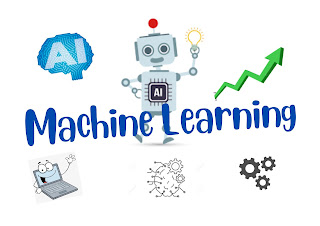machine learning | types of machine learning | future of machine learning
Machine Learning
 |
What is Machine Learning?
· · In health and care industry machine learning can play a vital role in diagnosing of diseases, to assist in formulating a diagnosis or recommends a treatment options, to analyze body fluids.
·
Machine learning can classify
available data into groups, which are the defined by rules set by analyst, that
ultimately allows analyst to predict whether the transaction is fraud or
legitimate, improves prediction system to calculate the possibility of fault.
·
Machine learning also helps in
extracting structured information from unstructured data.
·
Machine learning plays a vital role
in fortifying surveillance techniques by tracking down terrorists and
criminals, making the world a safer place.
·
Machine learning is also used in
maps, in which ML algorithms helps to calculate the quickest route having less
or no traffic, arrival time, pick-up location and the optimal route to a
destination. Machine learning techniques have incorporated a deep learning
model to explore transportation traffic, intricate roadway interactions and
environmental element.
·
Machine learning in agriculture helps
in precise and efficient farming with less man-power for high quality
production.
·
Siri, Alexa and Google assistants are
some of the smart assistants we use in our everyday life to carryout activities
like reminders, alarms, checking weather, etc.
· Machine learning also helps governments and authorities to manage huge amount of data and analyze real time data.
What are the four basics of Machine Learning?
 |
| Supervised Machine Learning |
Ø
Supervised Machine Learning –
Supervised learning as the name indicates the presence of a supervisor as teacher.
Basically, supervised learning is a learning in which we teach or train the
machine using data which is labelled that means some data is already tagged
correct answer. After that machine is provided with a new set of examples (data)
so that supervised learning algorithm analyses the training data (set of
training examples) and produces a correct outcome from labelled data.
Ø
Unsupervised Machine Learning –
Unsupervised learning is a machine learning technique, where you do not need to
supervise the model. Instead, you need to allow the model to work on its own to
discover information. Unsupervised learning algorithms allows you to perform
more complex processing task as compared to supervising learning. Unsupervised can
be more predictable compared with other natural learning methods.
Ø
Reinforcement Machine Learning –
Reinforcement learning can be understood using the concept of agents, environment,
states, actions and rewards. It is basically a part of machine learning which
deals with how to perform task through repeated trial and even interactions
with dynamic environment. Agent is awarded or penalized with a point for a correct
or a wrong answer and on the basis of the positive rewarded points gained the
model trains itself.
Ø
Semi-Supervised Machine Learning –
Semi-supervised learning is a combination of both supervised learning and
unsupervised learning methods as semi-supervised learning uses unlabeled data
as well as labeled data. Semi-supervised machine learning basically pick-up the
large unlabeled dataset, label a small portion of the dataset, put the
unlabeled dataset into cluster using unsupervised machine learning algorithm,
build your model to use the labeled data to label and classify the rest of the
unlabeled data.
.png) |
| Reinforcement Machine Learning |




Post a Comment